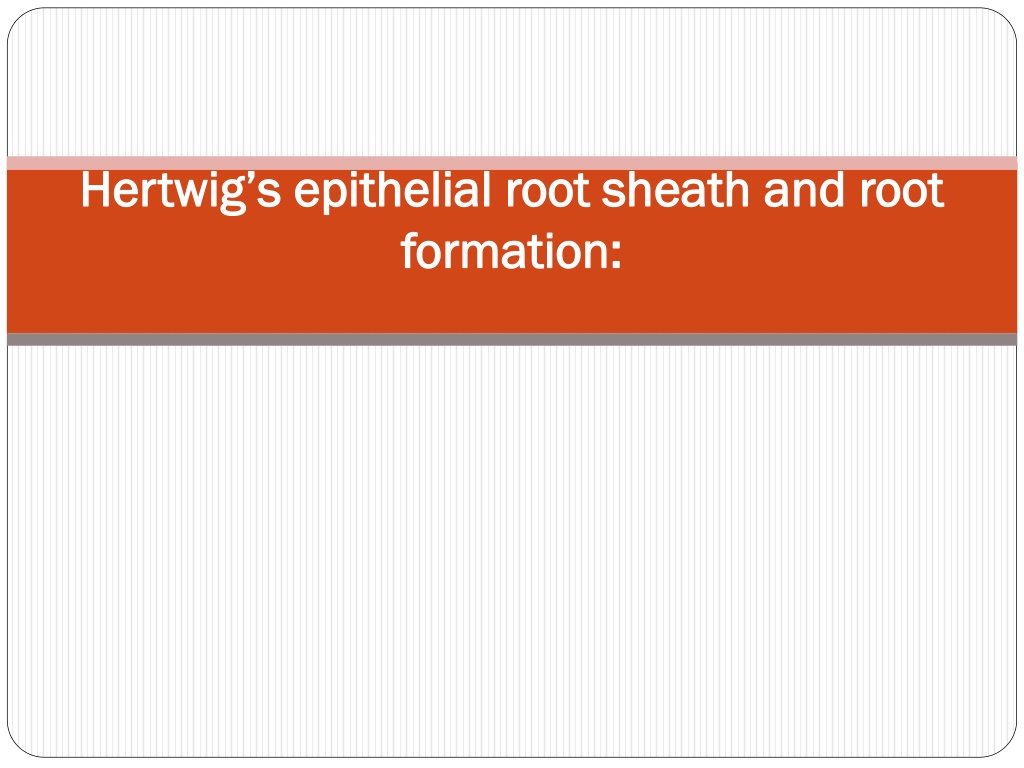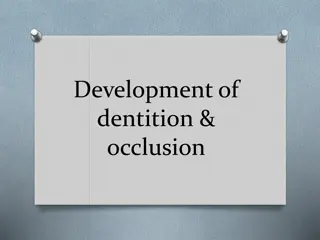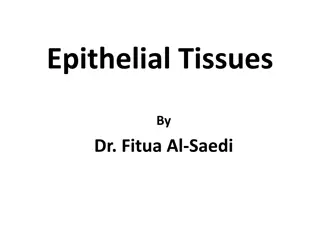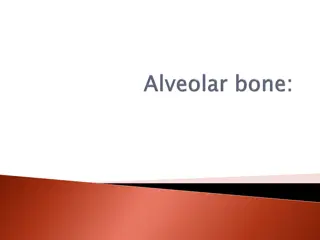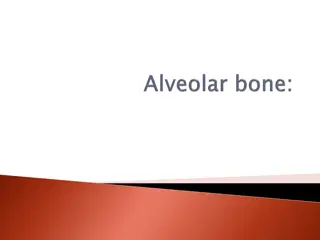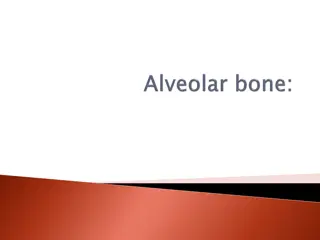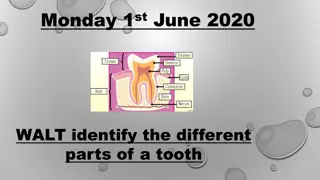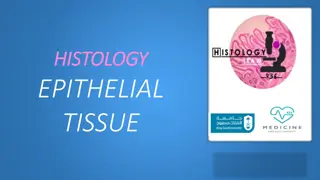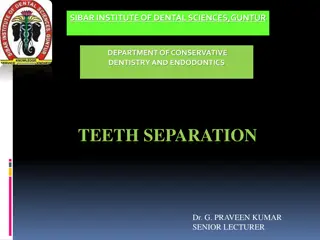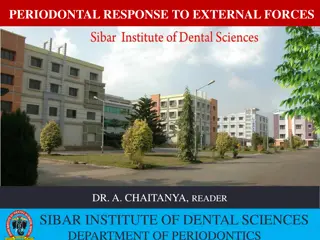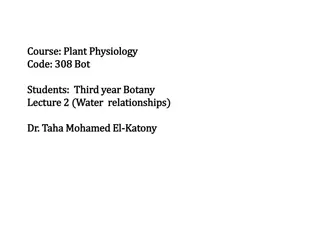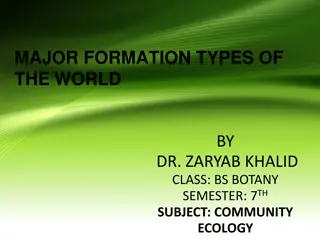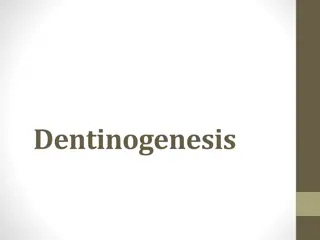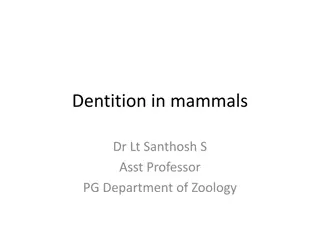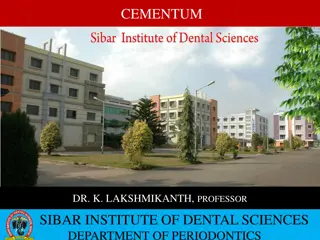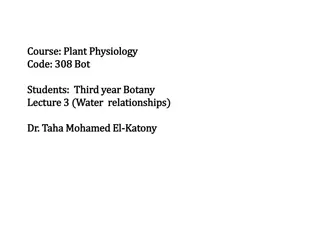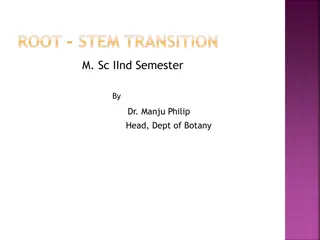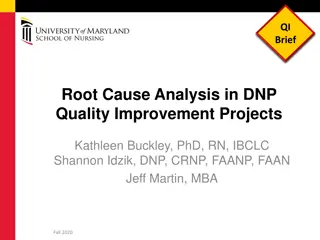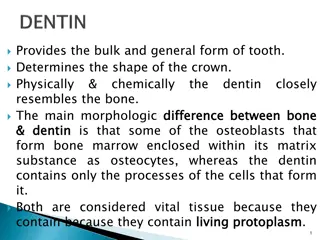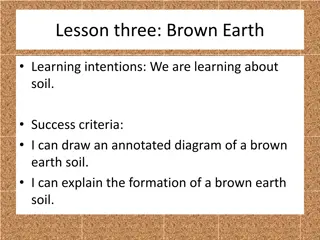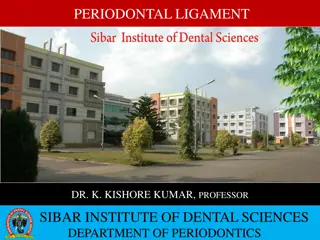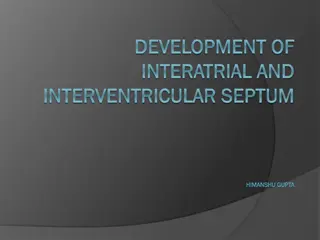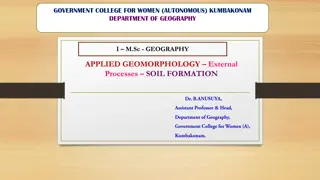Formation of Hertwig's Epithelial Root Sheath in Tooth Development
The formation of Hertwig's Epithelial Root Sheath (HERS) is crucial in determining the shape, length, and number of roots in teeth. It initiates the formation of radicular dentin, marking the beginning of root development after enamel and dentin formation. HERS consists of outer and inner enamel epithelia and plays a key role in differentiating radicular dental papilla cells into odontoblasts. As root formation progresses, HERS loses its structural continuity, leaving behind remnants known as rests of Malassez. The development of HERS varies in teeth with single roots versus multiple roots.
Download Presentation

Please find below an Image/Link to download the presentation.
The content on the website is provided AS IS for your information and personal use only. It may not be sold, licensed, or shared on other websites without obtaining consent from the author. Download presentation by click this link. If you encounter any issues during the download, it is possible that the publisher has removed the file from their server.
E N D
Presentation Transcript
Hertwigs Hertwig s epithelial root sheath and root epithelial root sheath and root formation: formation:
The cervical portion of the enamel organ gives rise to the epithelial root sheath of Hertwig (HERS) which is a bilaminar structure that outlines the future root and is thus responsible for the shape, length, size, and number of roots and initiates radicular dentin formation.
1-The development of the roots begins after enamel and dentin formation has reached the future cementoenamel junction. 2-Hertwig s root sheath consists of the outer and inner enamel epithelia only, and therefore it does not include the stratum intermedium and stellate reticulum. The cells of the inner layer remain short and normally do not produce enamel.
3-When these cells have induced the differentiation of radicular dental papilla cells into odontoblasts and the first layer of dentin has been laid down, the epithelial root sheath loses its structural continuity and its close relation to the surface of the root.
4-Its remnants persist as an epithelial network of strands or clumps near the external surface of the root. These epithelial remnants are found in the periodontal ligament of erupted teeth and are called rests of Malassez.
5-There is a pronounced difference in the development of HERS in teeth with one root and in those with two or more roots. Prior to the beginning of root formation, the root sheath forms the epithelial diaphragm .
The outer and inner enamel epithelia bend at the future cementoenamel junction into a horizontal plane, narrowing the wide cervical opening of the tooth germ. The plane of the diaphragm remains relatively fixed during the development and growth of the root. The proliferation of the cells of the epithelial diaphragm is accompanied by proliferation of the cells of the connective tissue of the pulp, which occurs in the area adjacent to the diaphragm.
6-The free end of the diaphragm does not grow into the connective tissue, but the epithelium proliferates coronal to the epithelial diaphragm. The differentiation of odontoblasts and the formation of dentin follow the lengthening of the root sheath. 7-At the same time the connective tissue of the dental sac surrounding the root sheath proliferates and invades the continuous double epithelial layer dividing it into a network of epithelial strands.
8-The epithelium is moved away from the surface of the dentin so that connective tissue cells come into contact with the outer surface of the dentin and differentiate into cementoblasts that deposit a layer of cementum on the surface of the dentin. 9-The rapid sequence of proliferation and destruction of Hertwig s root sheath explains the fact that it cannot be seen as a continuous layer on the surface of the developing root.
10-In the last stages of root development, the proliferation of the epithelium in the diaphragm breaks after that of the pulpal connective tissue. The wide apical foramen is reduced first to the width of the diaphragmatic opening itself and later is further narrowed by apposition of dentin and cementum to the apex of the root.
11-Differential growth of the epithelial diaphragm in multi- rooted teeth causes the division of the root trunk into two or three roots. During the general growth of the enamel organ the expansion of its cervical opening occurs in such a way that long tongue like extensions of the horizontal diaphragm develop. Two such extensions are found in the germs of lower molars and three in the germs of upper molars.
12- Before division of the root trunk occurs, the free ends of these horizontal epithelial flaps grow toward each other and fuse. The single cervical opening of the coronal enamel organ is then divided into two or three openings. On the pulpal surface of the dividing epithelial bridges, dentin formation starts and on the periphery of each opening, root development follows in the same way as described for single-rooted teeth.
13-If cells of the epithelial root sheath remain adherent to the dentin surface, they may differentiate into fully functioning ameloblasts and produce enamel. Such droplets of enamel, called enamel pearls, are sometimes found in the area of furcation of the roots of permanent molars.
14-If the continuity of HERS is broken or is not established prior to dentin formation, a defect in the dentinal wall of the pulp ensues. Such defects are found in the pulpal floor corresponding to the furcation or on any point of the root itself if the fusion of the horizontal extensions of the diaphragm remains incomplete. This accounts for the development of accessory root canals opening on the periodontal surface of the root.
CLINICAL CONSIDERATIONS 1-A lack of initiation results in the absence of either a single tooth or multiple teeth (partial anodontia), most frequently the permanent upper lateral incisors, third molars, and lower second premolars..
There also may be a complete lack of teeth (anodontia). On the other hand, abnormal initiation may result in the development of single or multiple supernumerary teeth
2-Teeth may develop in abnormal locations, for example, in the ovary (dermoid tumors or cysts) or in the hypophysis. 3-In vitamin A deficiency the ameloblasts fail to differentiate properly. So, their organizing influence on the adjacent mesenchymal cells is disturbed, and atypical dentin, known as osteodentin, is formed
4-Endocrine disturbances affect the size or form of the crown of teeth if such effects occur during morphodifferentiation, in utero or in the first year of life. Size and shape of the root, however, may be altered by disturbances in later periods. 5- retarded eruption that occurs in persons with hypopituitarism and hypothyroidism results in a small clinical crown that is often mistaken for a small anatomic crown.
6-Abnormal curvatures in the root, termed dilacerations may be due to trauma sustained during development of the root. 7- Disturbances in morphodifferentiation may affect the form and size of the tooth without impairing the function of the ameloblasts or odontoblasts. New parts may be differentiated like formation of supernumerary cusps or roots.
8-Twinning, i.e. two similar teeth may be produced as a result of splitting of one tooth germ. 9-Fusion of teeth produced from two tooth germs joined together before mineralization may occur.
Peg shaped teeth (screw-driver shaped) with the permanent upper central incisor showing a notched incisal edge may be seen in individuals born with congenital syphilis. This condition is known as Hutchinson s incisor.
11-Genetic and environmental factors may disturb the normal synthesis and secretion of the organic matrix of enamel leading to a condition called enamel hypoplasia. 12- If the organic matrix is normal but its mineralization is defective, then the enamel or dentin is said to be hypocalcified or hypomineralized. Both hypoplasia and hypocalcification can occur as a result of an insult to the cells responsible for the apposition stage of tooth development.
